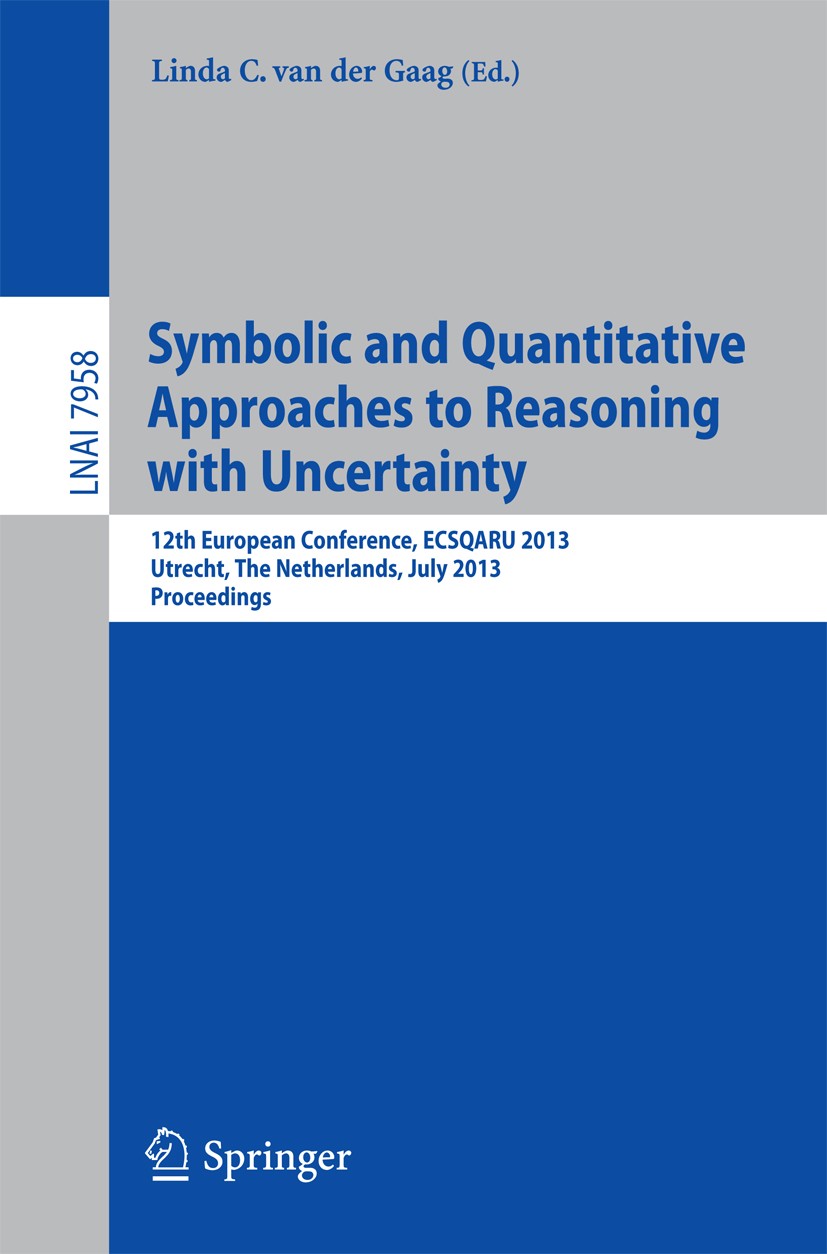| 书目名称 | Symbolic and Quantiative Approaches to Resoning with Uncertainty |
| 副标题 | 12th European Confer |
| 编辑 | Linda C. Gaag |
| 视频video | http://file.papertrans.cn/884/883853/883853.mp4 |
| 概述 | Fast track conference proceedings.Unique visibility.State of the art research |
| 丛书名称 | Lecture Notes in Computer Science |
| 图书封面 |  |
| 描述 | .This book constitutes the refereed proceedings of the 12th European.Conference on Symbolic and Quantitative Approaches to Reasoning with Uncertainty, ECSQARU 2013, held in Utrecht, The Netherlands, in July 2013. .The 44 revised full papers presented were carefully reviewed and.selected from 89 submissions. Papers come from researchers interested in advancing the technology and from practitioners using uncertainty techniques in real-world applications. The scope of the ECSQARU conferences encompasses fundamental issues, representation, inference, learning, and decision making in qualitative and numeric uncertainty paradigms.. |
| 出版日期 | Conference proceedings 2013 |
| 关键词 | bayesian networks; dynamic logic; information fusion; strong completeness; weighted social network |
| 版次 | 1 |
| doi | https://doi.org/10.1007/978-3-642-39091-3 |
| isbn_softcover | 978-3-642-39090-6 |
| isbn_ebook | 978-3-642-39091-3Series ISSN 0302-9743 Series E-ISSN 1611-3349 |
| issn_series | 0302-9743 |
| copyright | Springer-Verlag Berlin Heidelberg 2013 |
 |Archiver|手机版|小黑屋|
派博传思国际
( 京公网安备110108008328)
GMT+8, 2025-12-14 20:29
|Archiver|手机版|小黑屋|
派博传思国际
( 京公网安备110108008328)
GMT+8, 2025-12-14 20:29


